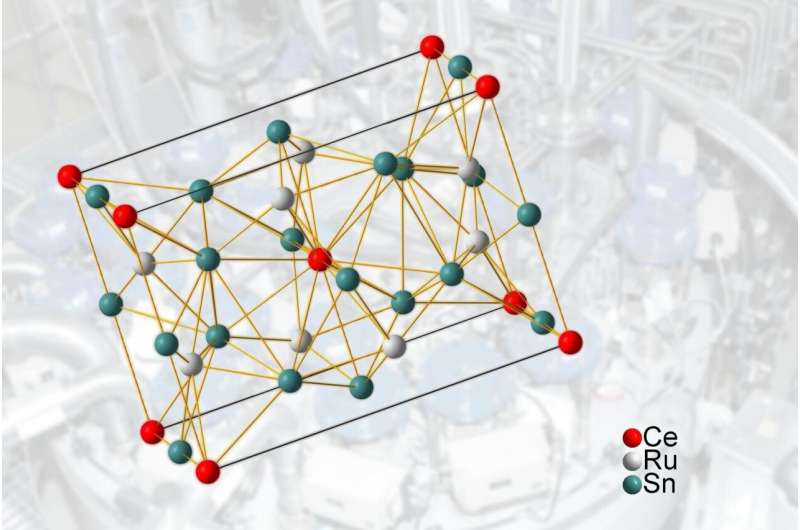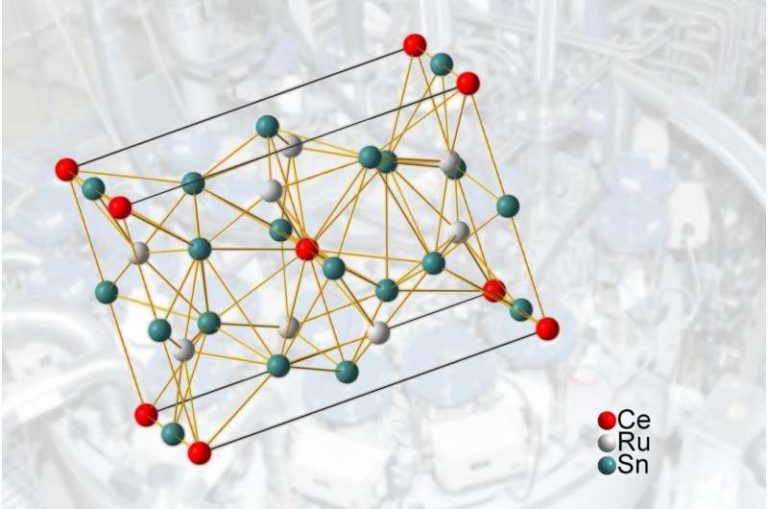An Austrian-American discovered New quantum material
In regular day to day existence, stage advances ordinarily have to do with temperature changes—for instance, when an ice 3D shape gets hotter and dissolves. Be that as it may, there are additionally various types of stage advances, contingent upon different boundaries like attractive field. To comprehend the quantum properties of materials, stage advances are especially intriguing when they happen straightforwardly at indisputably the zero mark of temperature. These changes are designated “quantum stage advances” or a “quantum basic focuses.”

Such a quantum basic point has now been found by an Austrian-American exploration group in a novel material, and in a strangely perfect structure. The properties of this material are presently being additionally researched. It is thought that the material could be a supposed Weyl-Kondo semimetal, which is considered to have extraordinary potential for quantum innovation because of unique quantum states (alleged topological states). On the off chance that this ends up being valid, a key for the focused on advancement of topological quantum materials would have been found. The outcomes were found in a participation between TU Wien, Johns Hopkins University, the National Institute of Standards and Technology (NIST) and Rice University and has now been distributed in the diary Science Advances.
Quantum criticality—less difficult and more clear than any time in recent memory
“Generally quantum basic conduct is concentrated in metals or separators. Yet, we have now taken a gander at a semimetal,” says Prof. Silke Bühler-Paschen from the Institute of Solid State Physics at TU Wien. The material is a compound of cerium, ruthenium and tin—with properties that lie between those of metals and semiconductors.
Typically, quantum criticality must be made under unmistakable natural conditions—a specific pressing factor or an electromagnetic field. “Shockingly, be that as it may, our semimetal ended up being quantum basic with no outside impacts by any means,” says Wesley Fuhrman, a Ph.D. understudy in Prof. Collin Broholm’s group at Johns Hopkins University, who made a significant commitment to the outcome with neutron dispersing estimations. “Typically you need to make a solid effort to create the suitable research facility conditions, however this semimetal gives the quantum criticality without anyone else.”
This astonishing outcome is presumably identified with the way that the conduct of electrons in this material has some uncommon highlights. “It is an exceptionally associated electron framework. This implies that the electrons connect emphatically with one another, and that you can’t clarify their conduct by taking a gander at the electrons separately,” says Bühler-Paschen. “This electron association prompts the alleged Kondo impact. Here, a quantum turn in the material is safeguarded by electrons encompassing it, with the goal that the twist no longer has any impact on the remainder of the material.”‘
In the event that there are just generally hardly any free electrons, similar to the case in a semimetal, at that point the Kondo impact is temperamental. This could be the justification the quantum basic conduct of the material: the framework changes between a state with and a state without the Kondo impact, and this has the impact of a stage progress at zero temperature.
Quantum variances could prompt Weyl particles
The principle motivation behind why the outcome is of such focal significance is that it is suspected to be firmly associated with the wonder of “Weyl fermions.” In solids, Weyl fermions can show up as quasiparticles—for example as aggregate excitations like waves in a lake. As per hypothetical expectations, such Weyl fermions should exist in this material,” says hypothetical physicist Qimiao Si of Rice University. Test confirmation, be that as it may, is yet to be found. “We presume that the quantum criticality we noticed blessings the event of such Weyl fermions,” says Silke Bühler-Paschen. “Quantum basic changes could thusly stabilizingly affect Weyl fermions, along these lines to quantum basic vacillations in high-temperature superconductors holding superconducting Cooper matches together. This is a major inquiry that is the subject of a ton of exploration all throughout the planet, and we’ve found an up and coming lead here.”
We can’t help suspecting that specific quantum impacts—specifically quantum basic vacillations, the Kondo impact and Weyl fermions—are firmly interlaced in the newfound material and, together, lead to colorful Weyl-Kondo states. These are ‘topological’ conditions of extraordinary solidness that, not at all like other quantum states, can’t be effectively annihilated by outside aggravations. This makes them especially fascinating for quantum PCs.
To check this, further estimations under various outer conditions are to be completed. The group expects that a comparative interchange of the different quantum impacts ought to likewise be found in different materials. “This could prompt the foundation of a plan idea with which such materials can be explicitly improved, custom-made and utilized for substantial applications,” says Bühler-Paschen.




0 Comments